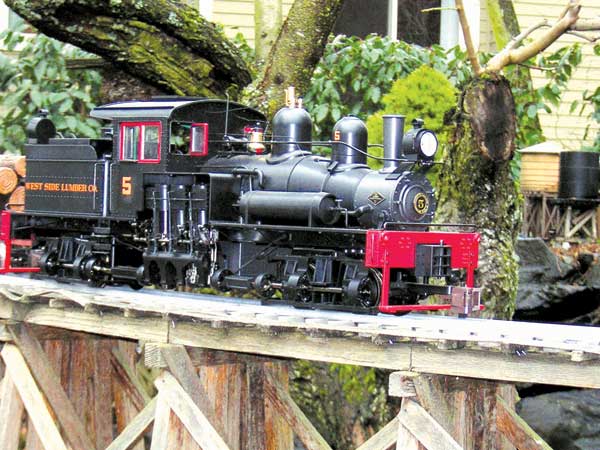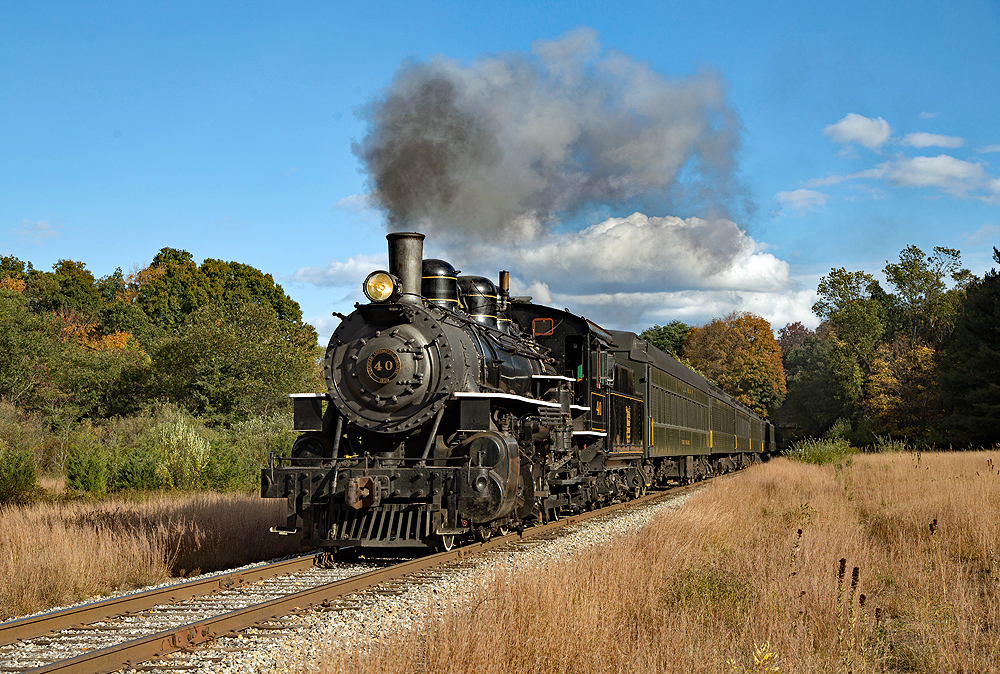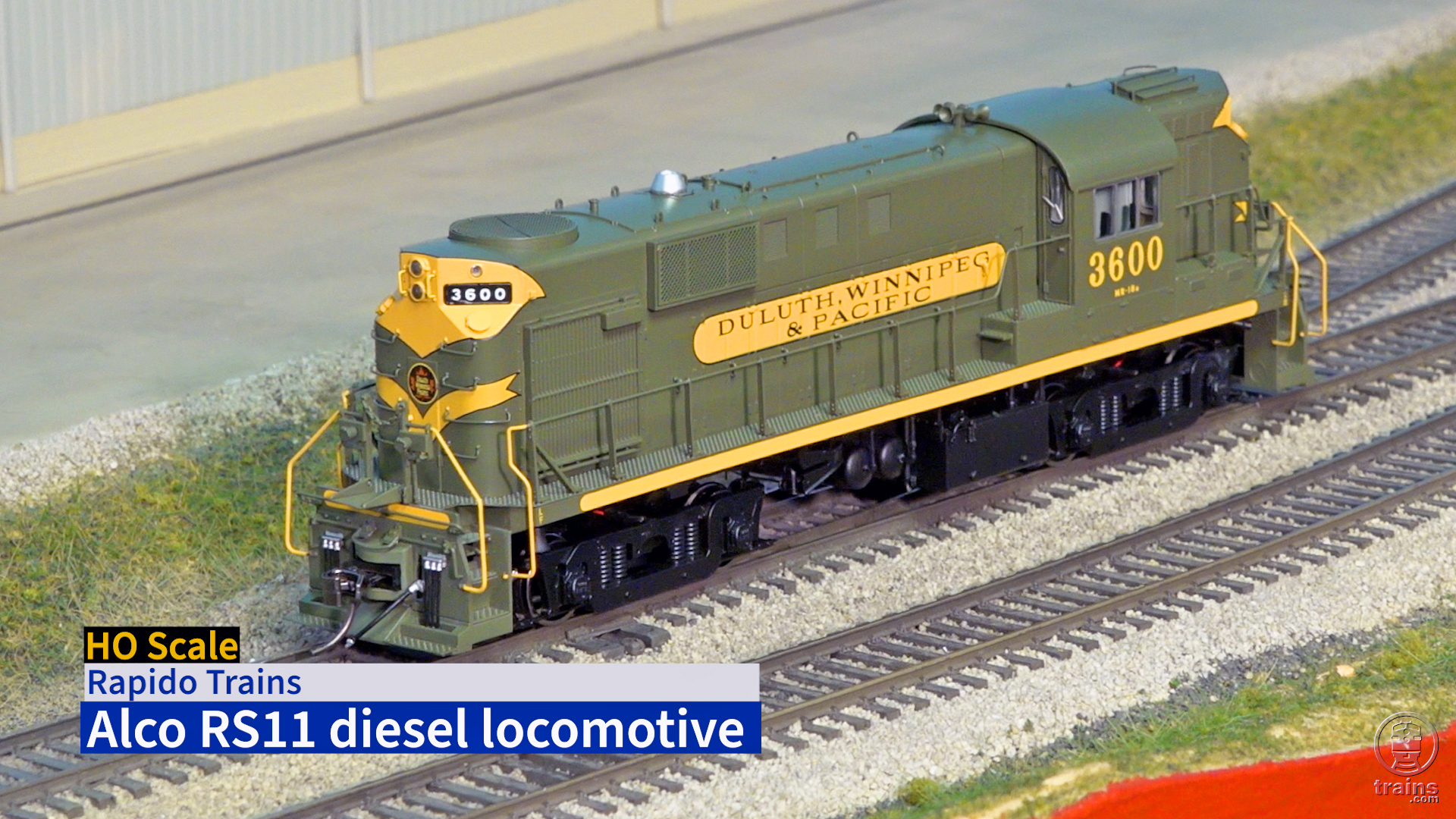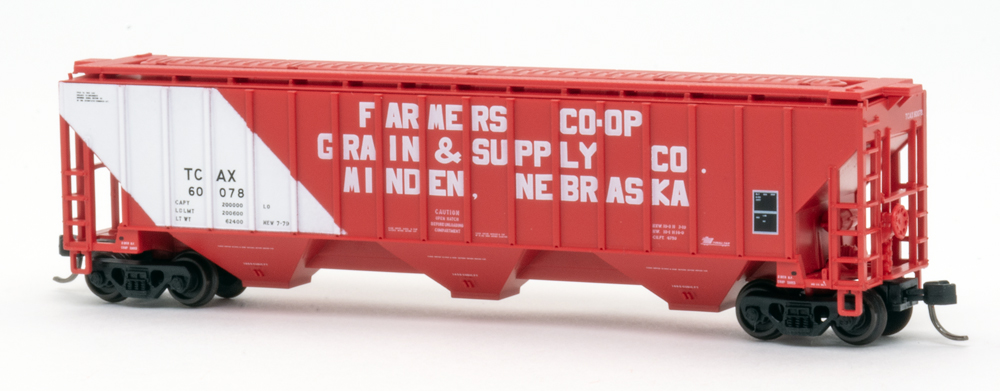1:20.3 scale, gauge 1, 38-ton Shay
Bachmann Industries, Inc.
1400 E. Erie Avenue
Philadelphia PA 19124
Price $799.95
Web site: www.bachmanntrains.com
Since this is a reissue (#82194) of an older model, I’m going to dispense with the usual description and pros and cons, and concentrate on the differences between this new Shay and the older one. (The original review appeared in the December 1997 issue.)
The gauge of the wheels is a real surprise. I have been doing Bachmann reviews, and have owned/operated Bachmann locomotives for a long time, and this is the first unit where all axles measure the same. Quality control seems to have been stepped up a bit. Wheels measure 1.566″ back to back, the minimum NMRA standard. This unit will go through properly gauged switches without jumping.
Boiler weights are no longer lead, but cast iron. The engine weighs about what the old Shay weighed. The inside of the firebox is now fully open to the top of the boiler, with a small board holding two LEDs (for flicker) screwed to the ashpan. This leaves lots of room for consumer-added electronics.
Inside the tender is the now-expected Bachmann DCC board, with drivers for the flicker and smoke unit. It is mounted on plastic stands high enough to allow a speaker to be installed beneath, using the speaker mounts provided. I installed an after-market sound system, and the speaker fits nicely, with cutouts provided for the rear truck wires to clear the speaker with no cutting. The battery fits in the oil bunker.
There are horizontal handrails above the cab windows and the front windows open outward, as photos show the prototype doing. My fireman’s window was stuck and the hinge plate popped loose in the cab when I got it open. Headlights on this model have reverted to the original Ely-Thomas vented style, although the reflector now has an LED in the center.
An interesting item is the brake system. Those who own the prior releases know the Ely Thomas engine has an air pump and air tanks, with appropriate piping, while the Pardee-Curtin version has steam brakes, with the horizontal cylinder on the fireman’s side of the firebox and the rigging under the frame. This engine has both.
The coupler mounts are metal, as are the couplers. Couplers are painted brown and appear to be the same as those on the Heisler. They work smoothly; the added weight of the lift pin lets it drop firmly when coupling.
The trucks are new, with metal housings and top and bottom covers. They are now attached to the top plate with two machine screws, not four sheet-metal screws as before. The bottom cover has four screws and the same two lube-port covers the older versions had.
The motor and all gears appear to be the same as in previous Shays, as do the wheels. Washer kits are factory-installed, which keep the wheels on and the gauge correct. Sideframes, shafts, and bevel gears all appear the same as in prior Shays.
Starting current in both directions was .5A at 4V. Full slip at 12V drew 1.6A. Drawbar pull with the engine’s shiny new drivers was two full pounds (enough for about 26 average, eight-wheel cars on straight, level track).
I have taken several new engines out of their boxes and, since the stacks come packed separately in the top of the packing, the locomotives are no longer held firmly into the lower packing as before. The ones I have opened have all had one or two hose hooks under the left running board broken, I suspect from the engine shifting in transit.
This is a good locomotive, a step up from the previous version, with details that make it especially nice.














